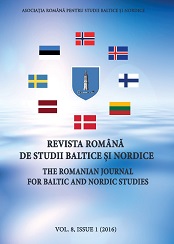Power, ideology and piety in high medieval Norway: The King’s Mirror
Power, ideology and piety in high medieval Norway: The King’s Mirror
Author(s): Costel CorobanSubject(s): Politics / Political Sciences, History, Theology and Religion
Published by: Asociatia Romana pentru Studii Baltice si Nordice
Keywords: power;ideology;medieval history;Norway; King’s Mirror
Summary/Abstract: This paper explores the concepts of piety and power in the work entitled Konungs skuggsjá (King’s Mirror or Speculum Regale), a writing that dates from circa 1250 issued under King Hákon Hákonarson (1217-1263) of Norway and issued for the education of his son, King Magnús lagabœtir (1263-1280). Konungs skuggsjá is utilitarian and didactic, unlike other examples of literature such as saga. It is presented in the form of a dialogue between an authoritative “Father” and the “Son” and is presumably authored by one of the priests, monks or chaplains at the Norwegian court, given the extensive theological knowledge expressed in it. The text bears similar characteristics to other pieces of mirror literature that is characteristic to the High Middle Ages. Piety, which can be considered a universal value in medieval times, was also required of kings and of all men, as The Homily Book (Hómilíubók) of the time prescribed obedience as a vital ingredient for salvation. In his exploration of Norwegian kingship in the High Middle Ages, the scholar Hans Jacob Orning begins by highlighting the difference between Christian piety, in which nothing can be asked of God in return for servitude towards him, and the old pagan beliefs, wherein the gods were often addressed various requests at occasions such as sacrifices.
Journal: Revista Română de Studii Baltice şi Nordice
- Issue Year: 8/2016
- Issue No: 1
- Page Range: 7-20
- Page Count: 14
- Language: English, Romanian

